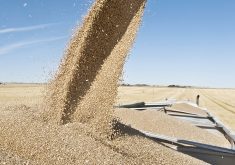Charting key to tracking trends
Forget the internet, forget market newsletters, forget the prognosticators in newspapers and electronic media.
The best marketing tool most farmers can use is a few sheets of graph paper, said John DePutter, of Wild Oats Grain Market Advisory.
DePutter told producers at the Saskatchewan Canola Growers Association annual meeting a couple of weeks ago that charting cash prices will provide a base of knowledge that will make you a much better marketer.
Charting can reveal a lot. It will show how basis – the difference between the cash price and the futures price – widens and narrows. From that you will learn to determine a good basis that signals that exporters or processors are short of supply and want your grain.
Read Also

India slaps 30 per cent import duty on yellow peas
India has imposed a 30 per cent duty on yellow pea imports with a bill of lading date on or after Nov. 1, 2025.
The simple act of charting will make you more aware of the market and its price trend. You’ll know when there is a rally and when there is a slump.
Track your progress
You can mark when and at what price you made sales and compare it to the yearly average, and learn from your mistakes – or successes.
The charts will show that there tend to be price increases at certain times of year. There is a rally in December or January, another in March-April and sometimes one in June-July.
This year is no different. Although the United States harvested a record soybean crop, it isn’t a deadweight on the market because demand has also grown.
Supplies of another competing oilseed, palm oil, are tighter than normal because El Nino has hurt yields in southeast Asia. In fact, Indonesia in December stopped exports of palm oil.
This has been positive for all oilseed prices including canola, and prices could rally in late March or early April before harvest begins on a record South American soybean crop.
DePutter tried to calm concerns about the effect of the Asian currency crisis on canola markets. Japan is the only significant buyer of canola in the area, taking more than half the Canadian crop.
Although its economy has been stagnant for several years, Japan has continued to buy canola seed. And a chart showing the cost of Canadian canola in Japanese yen over the years shows the seed was relatively much more expensive in the mid 1980s than it is today.
Looking further into the future, DePutter said a study of grain prices this century shows peaks every 27 years. So get ready for a happy millennium – the last peak was in 1973.














